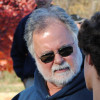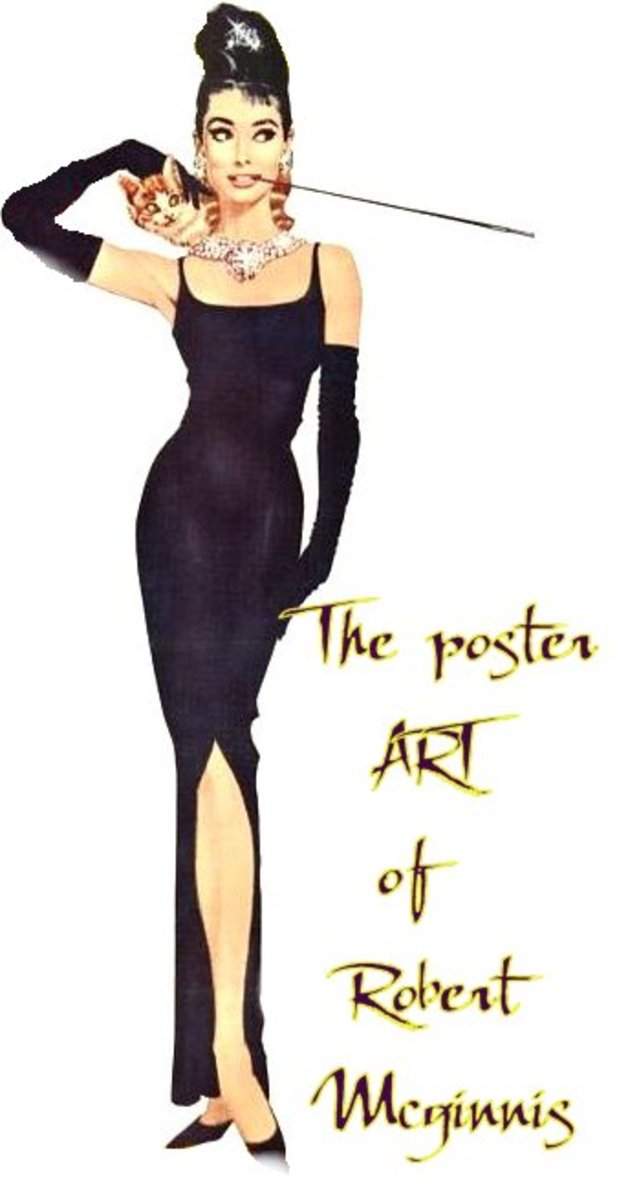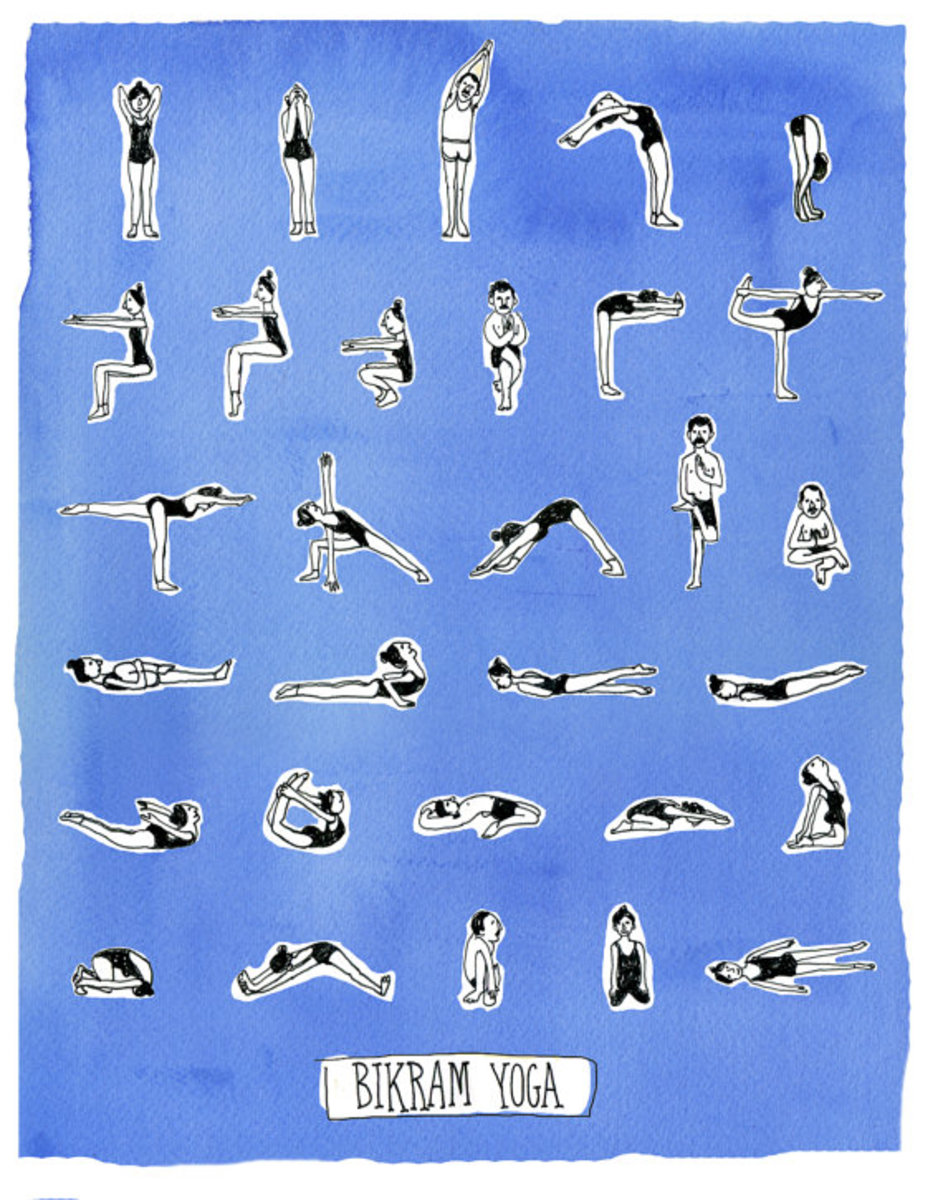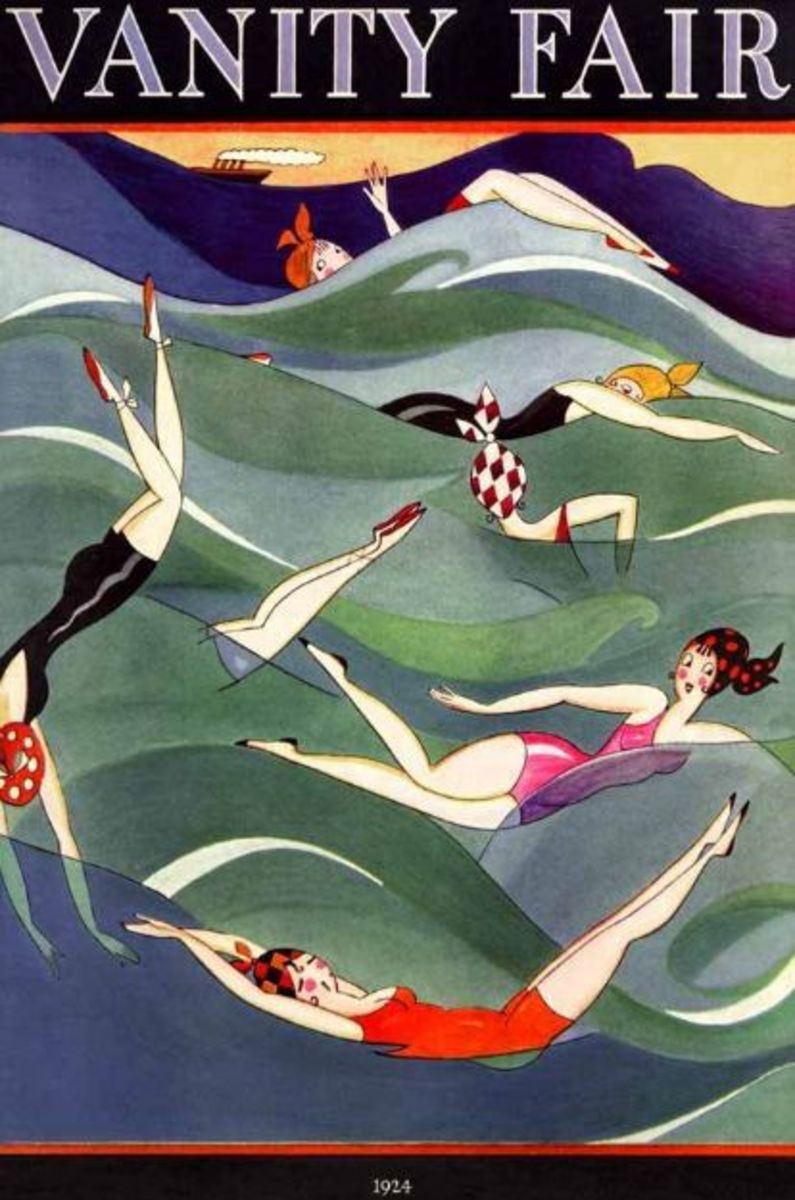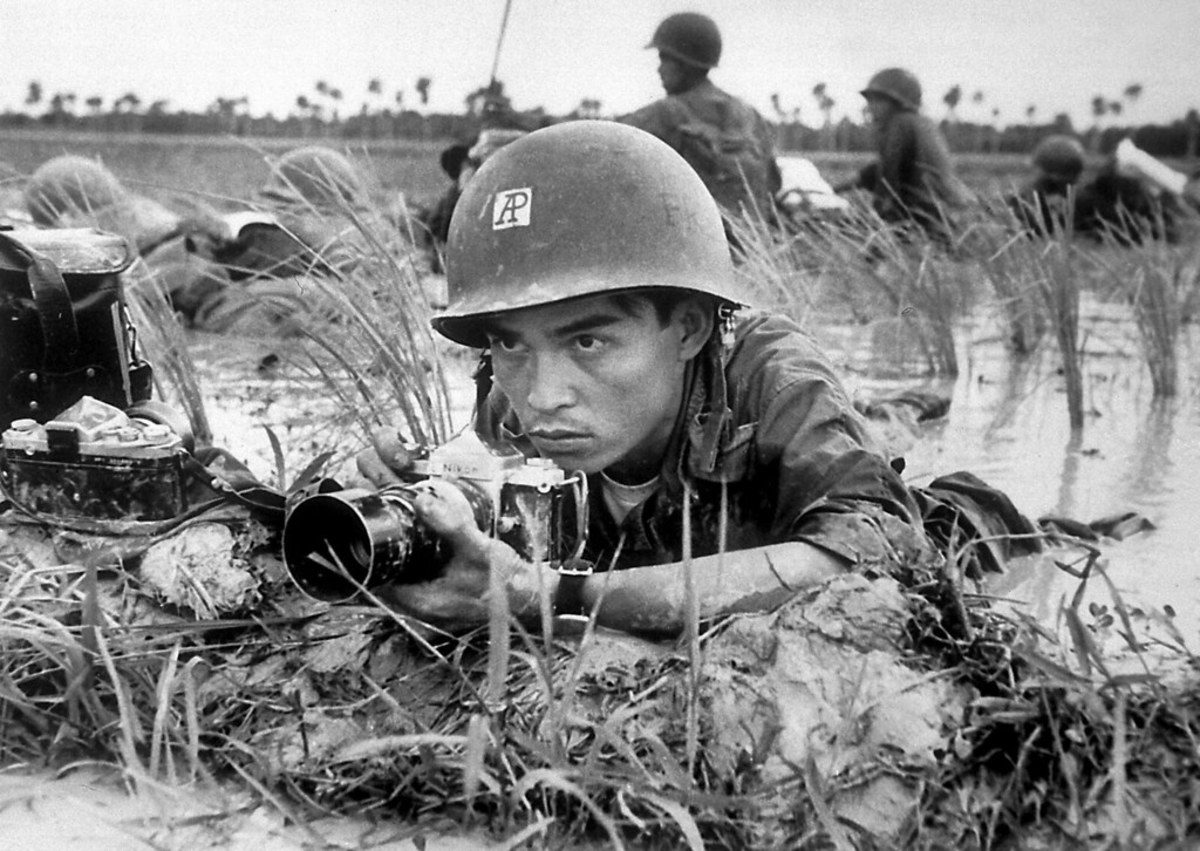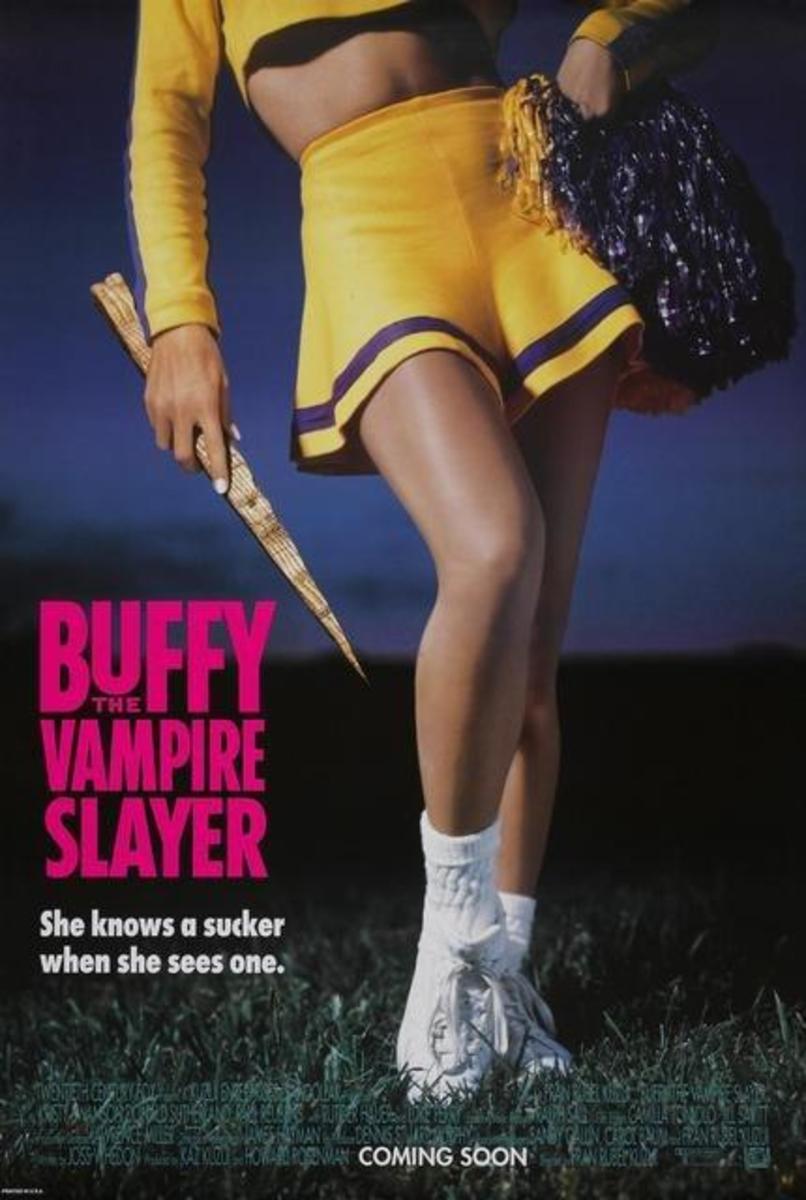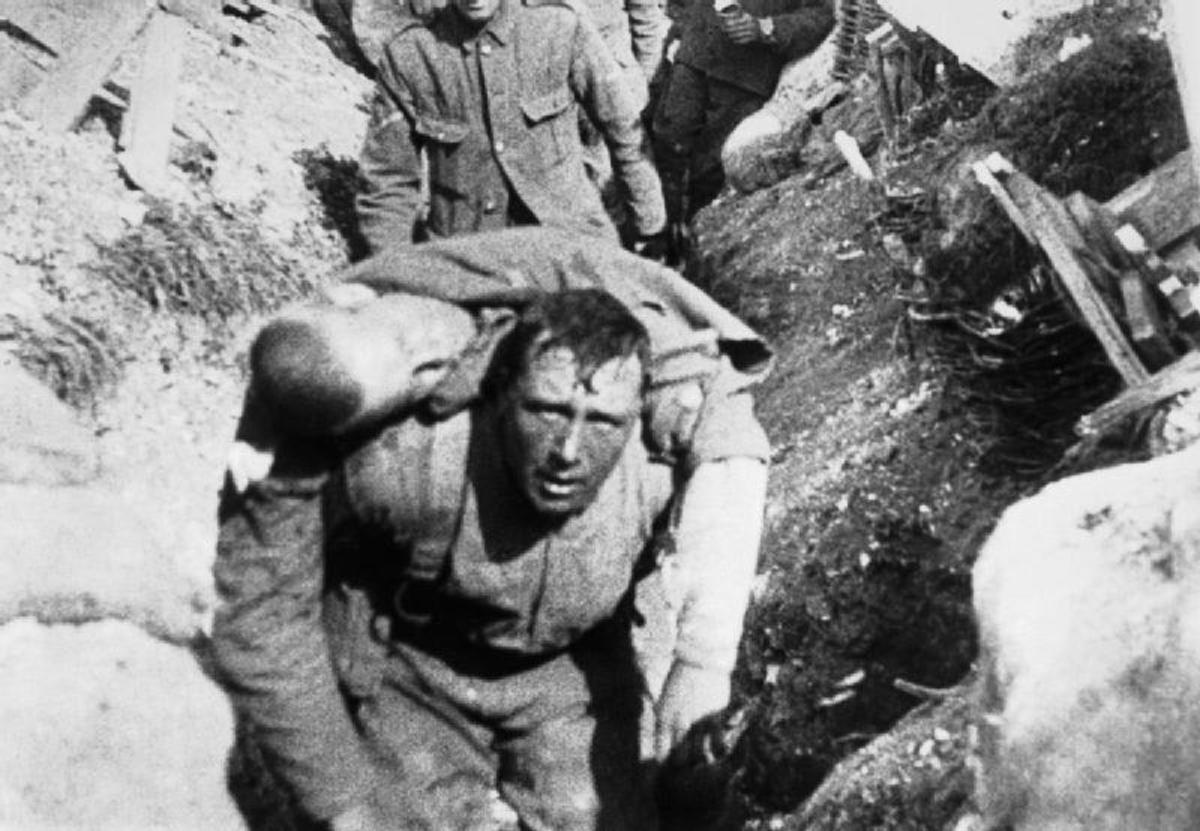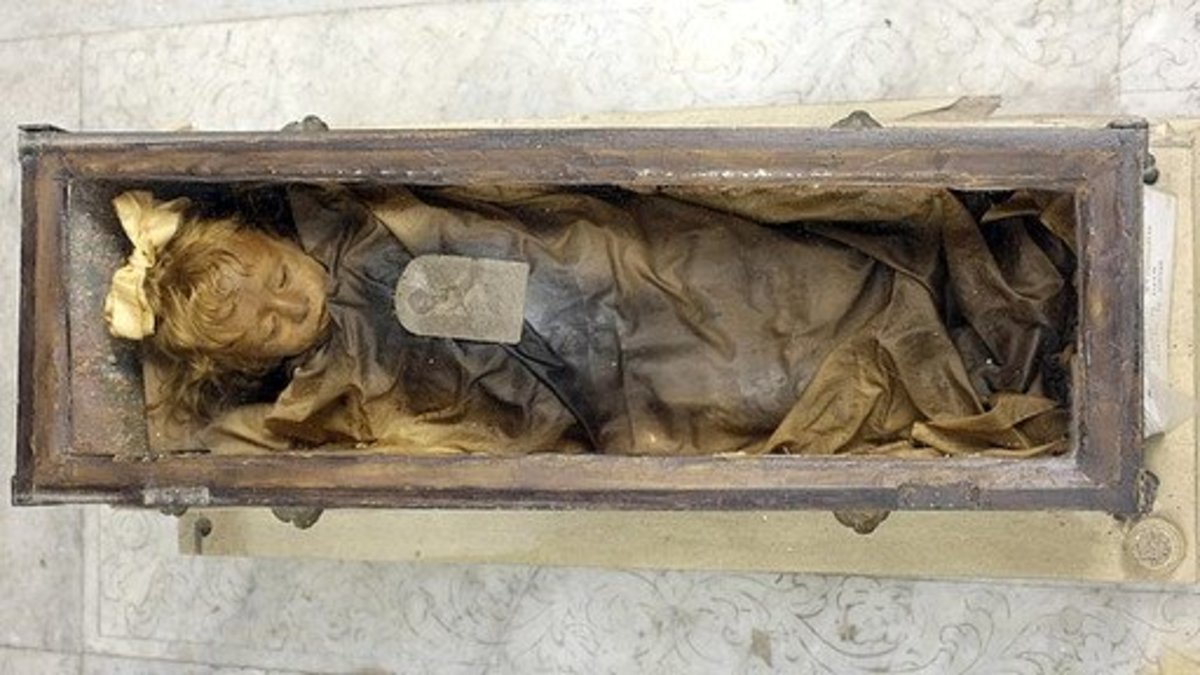- HubPages»
- Education and Science»
- History & Archaeology»
- History of the Modern Era»
- Twentieth Century History
Nixon Posters
These are some of my favorite Nixon-era posters. I was in college during his presidency and obviously it was a very formative period in my life. A lot of what you hear about from that time period: the generation gap, the social revolution, and the anti-war movement are very real although oftentimes it is hyperbolized. In any event, here is a brief summary of Nixon v. the youth of America in posters.
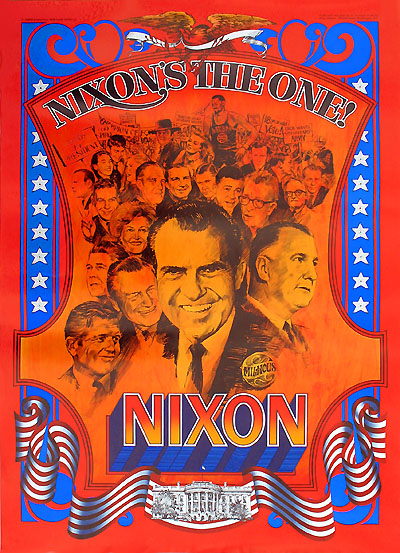
Nixon’s the One – 1968 Campaign Poster
There are several variations of this poster, the one shown here is, in my opinion, heavily influenced by the “Sgt. Pepper” cover and directed at America’s youth. The poster features Nixon in the foreground wearing a ‘Milhous’ button surrounded by contemporary celebrities and politicians. Included in the group are Wilt Chamberlain, Clint Eastwood, Spiro Agnew, Pat Nixon, Nelson Rockefeller, Barry Goldwater, John Lindsay, Ronald Reagan and Gerald Ford.
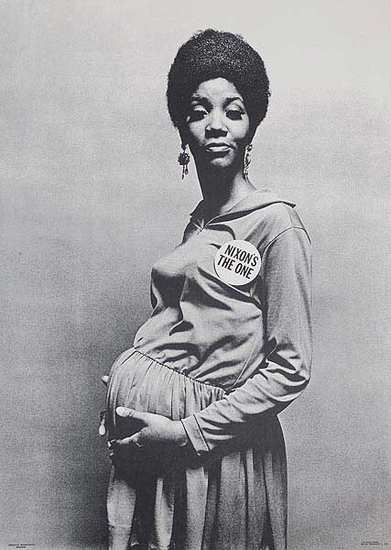
Nixon’s the One – The Other Side Speaks
This is one of my favorite all-time posters; there are several versions with different women. It obviously is a play on the campaign poster. There really is no more commentary needed.
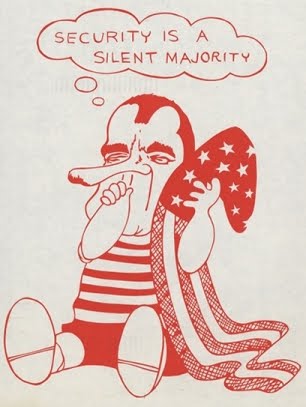
The Silent Majority
Nixon won the 1968 election by campaigning to end the Vietnam War with an honorable peace. The phrase which the administration constantly bandied about was “Peace with Honor.” When the administration’s pace to end the war continued to drag and actually included escalations, demonstrations continued to occur. As a result of the Moratorium to End the War in Vietnam held in October 1969, Nixon gave a speech to the nation on November 3. During this speech he laid out his plans to end the war through diplomatic negotiation and his plan of Vietnamization. At the end of the speech he requested the support of the “great silent majority” for his plans.
The speech was tremendously successful. The White received tens of thousands of letters and telegrams in support of Nixon and his plans. More importantly it promoted an opportunity for the Republican Party to expand its base with a new majority and promote conservative policies.
There were also a large number of dissenters to Nixon’s plan. However, nothing they ever did amounted to the political capital generated by the concept of Nixon’s Silent Majority.
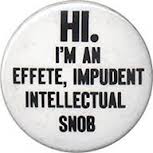
Effete Intellectual Snobs
With the election of Nixon/Agnew in 1968 an assault was begun against all those who opposed administration policies. While this is not at all uncommon the Nixon administration took it to new levels. Until he was shut down by his own misdeeds Spiro Agnew was the point man in the war of words.
At a Republican fund-raising dinner in New Orleans on October 19, 1969 the vice president addressed the protestors who had participated in the October 15th Moratorium to End the War in Vietnam. Hundreds of thousands of people had participated in moratorium events in the United States and across Europe. Agnew characterized them as people who “overwhelm themselves with drugs and artificial stimulants.”
He went on to say: “Education is being redefined at the demand of the uneducated to suit the ideas of the uneducated. The student now goes to college to proclaim rather than to learn. The lessons of the past are ignored and obliterated in a contemporary antagonism known as ‘The Generation Gap.’ A spirit of national masochism prevails, encouraged by an effete core of impudent snobs who characterize themselves as intellectuals.”
Other conservatives and the press fell in love with the last sentence. The insult was compressed into “effete intellectual snobs” and even shorter, “effete intellectuals.”
One of the results of the surge in popularity by Agnew was the beginning of a “Free Kim Agnew” movement. Agnew was forced to resign office when he pled nolo contendre to a tax evasion charge stemming from payments he took as governor. He personally was fortunate because circumstances dictated that he be replaced as quickly as possible because signs were that the impeachment of Nixon was looming in the not-too-distant future.
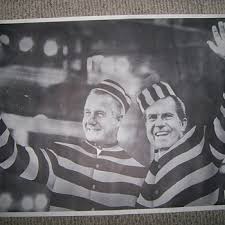
Nixon & Agnew in Prison Garb
This poster speaks for itself; Agnew was gone and Nixon was going. Both easily could have served prison time, many of Nixon’s aides did, I think the country was better off that they did not. In my opinion President Ford made a bold and proper decision by pardoning Nixon.
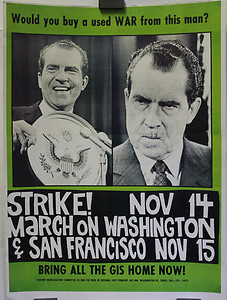
Student Strike/March on Washington
Poster for the national student strike and march on Washington to be held in November 1971 to protest the war. At the top of the poster: “Would you buy a used war from this man?” is a play on the next poster.
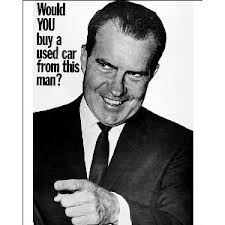
Would You Buy A Used Car From This Man?
At the time, this was a relevant question.
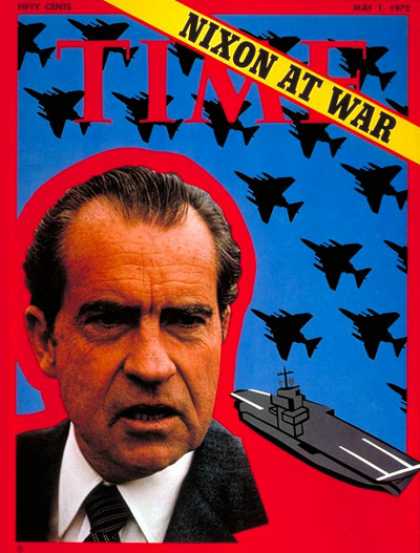
Time Magazine Cover Poster
A poster was made of this cover of Time that came out May 1, 1972. We had just bombed Hanoi and Haiphiong harbor triggering student protests across the country. South Vietnam was threatened with being cut in two by the NVA Eastertide attack in central South Vietnam and Quang Tri City had just been abandoned to the NVA. As a countermeasure Nixon authorized massive B-52 air strikes into North Vietnam.
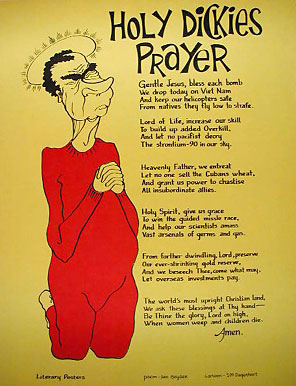
Holy Dickies Prayer
Gentle Jesus, bless each bomb
We drop today on Viet Nam
And keep our helicopters safe
From natives they fly low to strafe.
Lord of Life, increase our skill
To build up added Overkill,
And let no pacifist decry
The strontium-90 in our sky.
Heavenly father, we entreat
Let no one sell the Cubans wheat,
And grant us power to chastise
All insubordinate allies.
Holy Spirit, give us grace
To win the guided missile race,
And help our scientists amass
Vast arsenals of germs and gas.
From further dwindling, Lord, preserve
Our ever-shrinking gold reserve,
And we beseech Thee, come what may,
Let overseas investments pay.
The world’s most upright Christian land,
We ask these blessings at Thy hand---
Be Thine the glory, Lord on high,
When women weep and children die.
Amen.
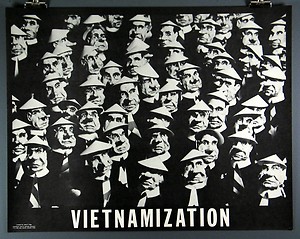
Nixon's Plan to End the War
Upon taking office in 1969, Nixon introduced a new strategy called Vietnamization that was aimed at ending American involvement in the Vietnam War by transferring all military responsibilities to South Vietnam. The increasingly unpopular war had created deep divisions in American society. Nixon believed his Vietnamization strategy, which involved building up South Vietnam's military strength in order to facilitate a gradual withdrawal of U.S. troops, would prepare the South Vietnamese to take responsibility for their own defense against a Communist takeover and allow the U.S. to leave the conflict with its honor intact. In 1973, the U.S. negotiated a treaty with the North Vietnamese, withdrew American combat troops and declared the Vietnamization process complete. However, in 1975, South Vietnam fell to Communist forces.
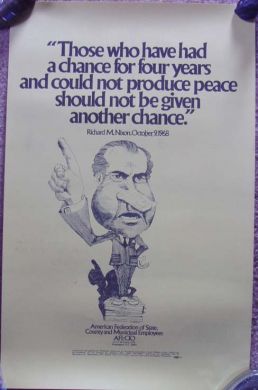
1968 Campaign Quote
Presidential News Conference August 29. 1972:
Q. Mr. President, I would like to ask about a 1968 statement you made and find out whether you still agree with it. It is: "Those who have had a chance for 4 years and could not produce peace should not be given another chance."
THE PRESIDENT. I think that the answer I gave to the other question is as responsive as I can make it. We always, of course, set our goals high. We do our very best to reach those goals. I think there are those who have faulted this Administration on its efforts to seek peace, but those who fault it, I would respectfully suggest, are ones that would have the United States seek peace at the cost of surrender, dishonor, and the destruction of the ability of the United States to conduct foreign policy in a responsible way. That I did not pledge in 1968. I do not pledge it now. We will seek peace. We will seek better relations with our adversaries, but we are going to keep the United States strong. We are going to resist the efforts of those who would cut our defense budget to make us second to any power in the world, and second particularly to the Soviet Union, and in order to do that, it means that we have to continue the responsible policy that we have carried out.
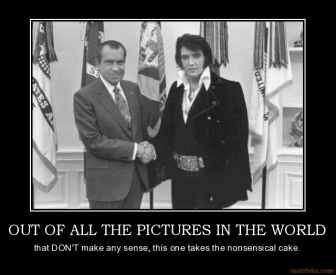
Nixon Meets Elvis
On December 21, 1970, Elvis paid a visit to Nixon at the White House. The meeting was initiated by Presley, who hand wrote Nixon a six-page letter requesting a visit with the President and suggesting that he be made a "Federal Agent-at-Large" in the Bureau of Narcotics and Dangerous Drugs. The events leading up to and after the meeting are detailed in the Nixon Presidential Library, which include Presley's handwritten letter, memoranda from Nixon staff and aides, and the thank-you note from Nixon for the gifts (including a Colt 45 pistol and family photos) that Presley brought with him to the Oval Office.
Of note is the memo Dwight Chapin wrote to H.R. Haldeman regarding the Presley visit. The last paragraph states: “In addition, if the President wants to meet with some bright young people outside of the Government, Presley might be the perfect one to start with.” Haldeman has handwritten at the end of the paragraph, “You must to be kidding.”
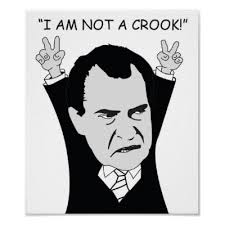
I Am Not A Crook
There are many variations of this poster. It originates from November 17.1973 when Nixon engaged in an hour-long question and answer session on prime time television before 400 Associated press managing editors at their conference in Orlando. In answer to a question Nixon said, “I have earned every cent. And in all of my years of public life I have never obstructed justice.” He later stated, “People have got to know whether or not their President is a crook. Well, I'm not a crook. I've earned everything I've got."
Nixon's Last Day - August 9, 1974
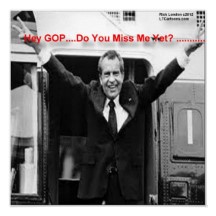
Something To Ponder

